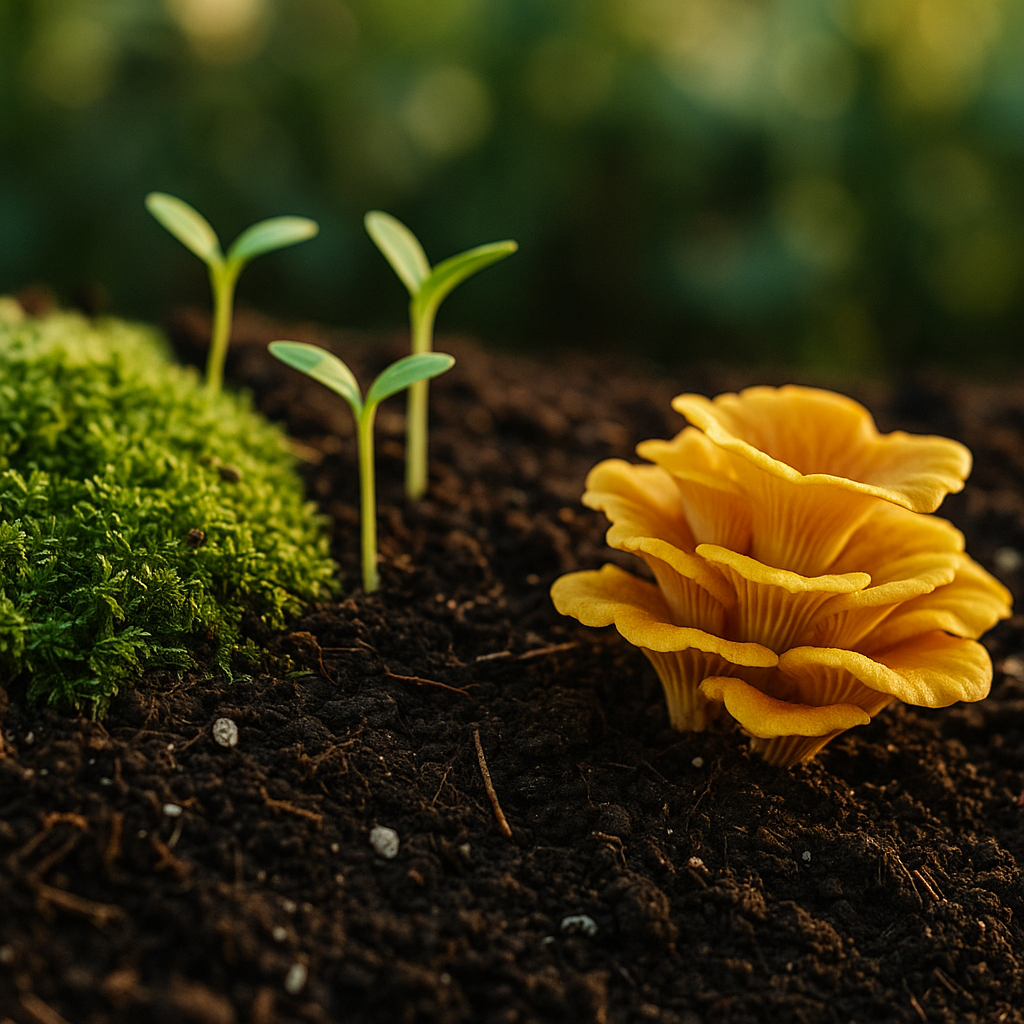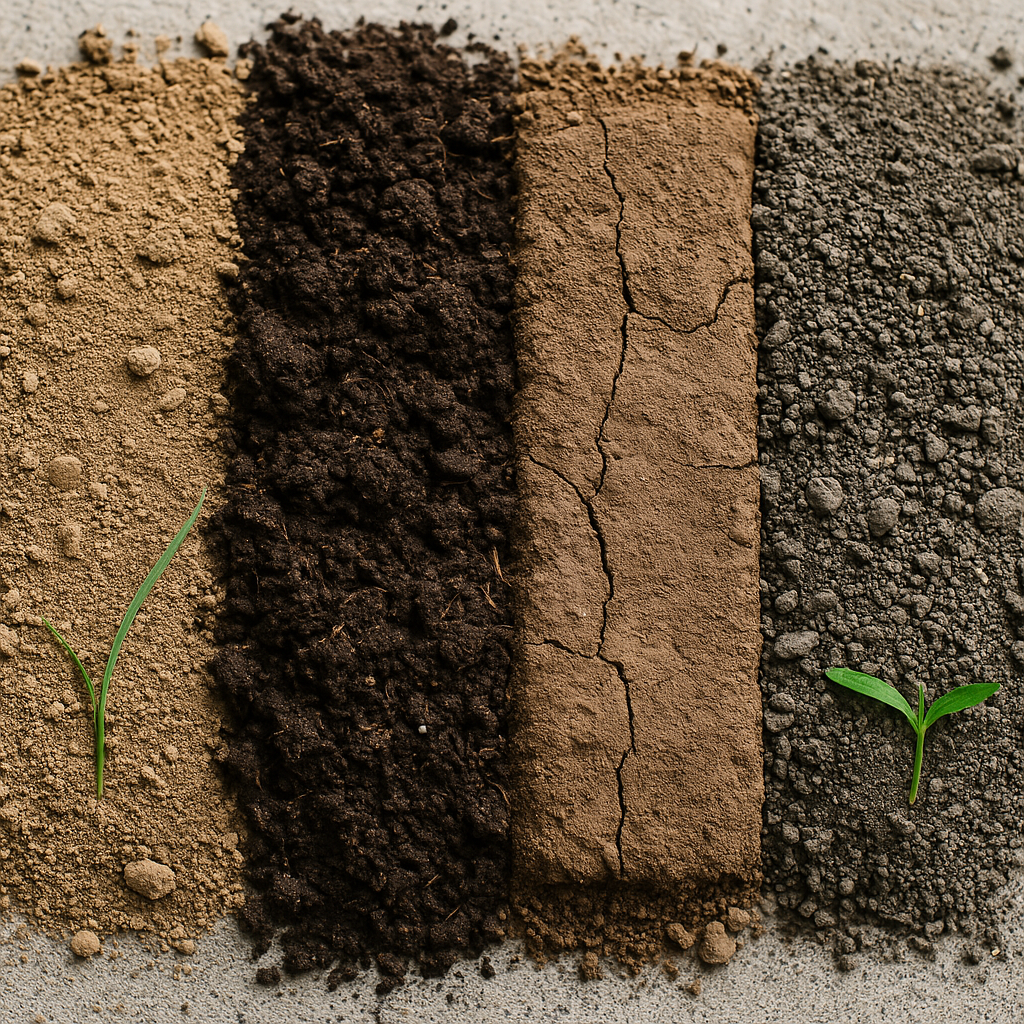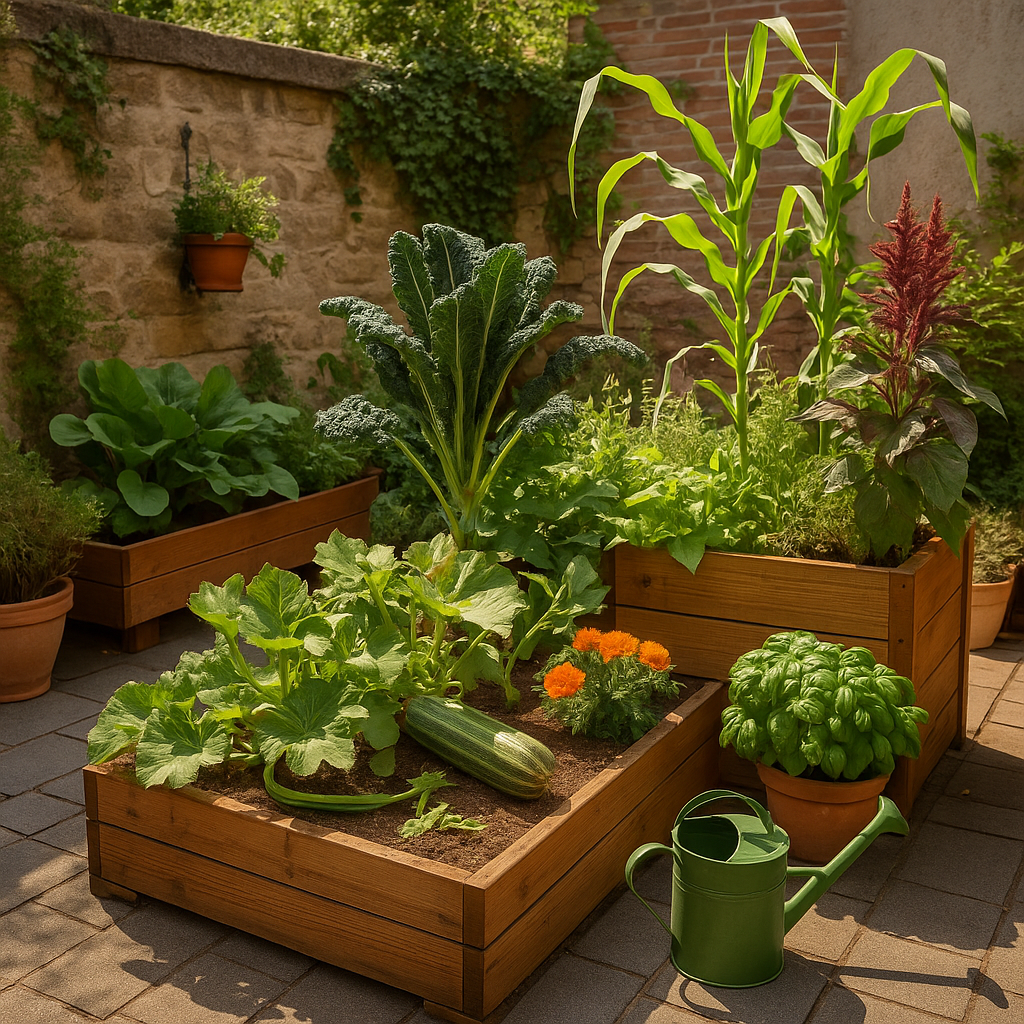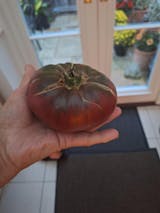A living soil is a soil that naturally nourishes
In permaculture, we do not feed the plants, we feed the soil. Why? Because it is the soil microorganisms that decompose, transform, and make available the nutrients necessary for plant growth. A living soil is therefore a rich, active, and autonomous soil.
1. What is a living soil?
- 🌱 Aerated soil, with channels formed by earthworms and dead roots.
- 🌿 Covered soil, never left bare (mulching, green manure).
- 🦠 Soil little or not worked, so as not to disturb life in depth.
2. Who lives in a living soil?
🦠 Soil bacteria
- Decompose organic matter (leaves, compost).
- Transform nitrogen from the air into assimilable nutrients.
- Essential for the chemical balance of the soil.
🍄 Fungi & mycorrhizae
- Underground network that connects plants together (“soil internet”).
- Increase root absorption surface up to 1000×.
- Exchange water, minerals, carbon with roots.
🪱 Soil fauna
- Earthworms: aerate, mix, digest organic matter.
- Springtails, nematodes, mites: essential small decomposers.
- Useful larvae and insects: participate in the underground food chain.
3. Why preserve soil life?
- 💧 To improve water retention naturally.
- 🌿 To avoid deficiencies and imbalances linked to chemical fertilizers.
- 🌾 To promote more resistant plants to diseases and pests.
- ♻️ To recycle organic waste directly in the garden.
4. How to maintain a living soil?
- 🪵 Mulch permanently (hay, leaves, wood chips, dry mowing).
- 🌾 Sow green manures (phacelia, clover, mustard).
- 🍂 Add compost or carbonaceous materials.
- ❌ Do not turn the soil (prefer surface loosening).
- 🚿 Limit excessive watering that washes away microfauna.
Conclusion
A productive and resilient garden always starts with a living soil. What you see on the surface depends on what happens below. By cultivating soil life, you maintain a fertile, autonomous, and sustainable vegetable garden.
🌿 Discover our compatible seeds to nourish the earth right now.





Leave a comment
This site is protected by hCaptcha and the hCaptcha Privacy Policy and Terms of Service apply.